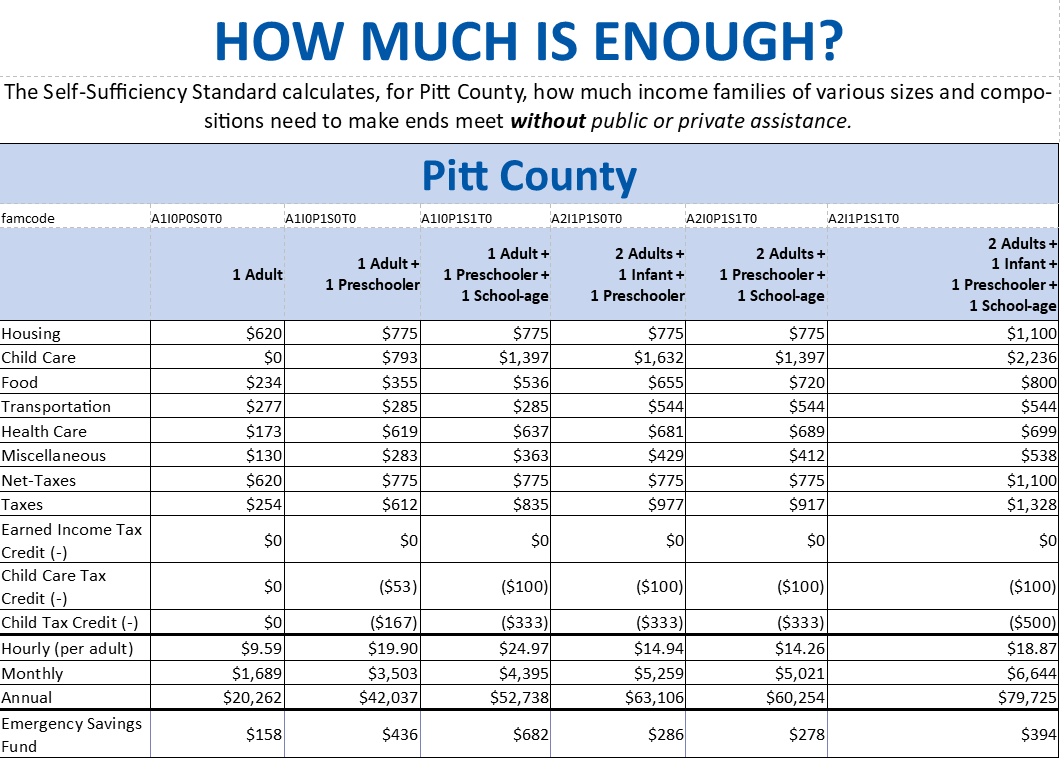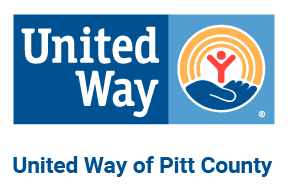
A NEW ECONOMIC TOOL FOR PITT COUNTY
New tool gives more accurate measure of financial stability.
A family of four (two adults and two kids) living in Pitt County is classified as living in poverty when the household makes a combined $24,600. That same family would have to make over $60,000 in order to afford basic needs without public or private assistance.
That’s a big gap. And filling it requires more than an education and higher paying job. That’s why we partnered with United Way of North Carolina to conduct a statewide study that shines the light on this often unknown struggle many families face.
SELF-SUFFICIENCY STANDARD REPORTS
NEW! Pitt County Data Sheet
NEW! Getting to self-sufficiency (Pitt county)
NEW! How much is enough? (pitt County)
How does the standard compare? (pitt county)
NEW! 2020 Self-Sufficiency Standard Report for North Carolina
Did you know? The Self-Sufficiency Standard Report for Pitt County shows the level of income families need to be economically self-sufficient depends both on family composition—the number of adults, the number of children, and the children’s ages—and where they live. Table 1 below illustrates how substantially the Standard varies by family type by showing the Standard for four different family configurations in Pitt County.
Table 1: Self-Sufficency Standard for select family types

REPORTS AND RESOURCES
Economic Security Pathways Report
Our Money Needs Calculator
Key Reports Findings (Self -Sufficiency Standard Report 2017)
Do you know how much it takes to be self-sufficient in your county? – download this worksheet and enter what you think it costs for basics in your county and compare the data.
How is the Self-Sufficiency Standard Calculated
USING THE SELF-SUFFICIENCY STANDARD IN OUR COMMUNITY
Across the country, the Self-Sufficiency Standard is being used to help organizations and communities better understand issues of income adequacy and create and analyze policy; and to help individuals striving to meet their basic needs. Use the links below to learn more about some of the ways the Standard is being used.
-
Targeted Allocation of Resources - The Standard has been used to target job training resources and helps demonstrate the pay off for investing in education and training. Read more about how communities have used the Standard to target resources.
-
Counseling Tool - The Self-Sufficiency Standard has been used as a counseling tool to help participants in work and training programs access benefits and develop strategies to become self-sufficient. Read more about how communities have used the Standard as a counseling tool.
-
Community Indicator - The Self-Sufficiency Standard provides communities with an indicator of the cost of living at a basic needs level. Read more about how communities have used the Standard as a community indicator.
-
Policy Analysis - The Self-Sufficiency Standard has been used to evaluate the impact of a variety of work supports (such as SNAP/Food Stamp Program or Medicaid) or policy options (such as changes in child care co-payments, tax reform, or tax credits) on family budgets. Read more about how Oregon uses the Standard in policy and advocacy work.
-
Want to see more ideas on how to use the Standard? - Read more examples of ways communities are using the Self-Sufficiency Standard.

1440 East Arlington Blvd., Suite B
Greenville, NC 27858